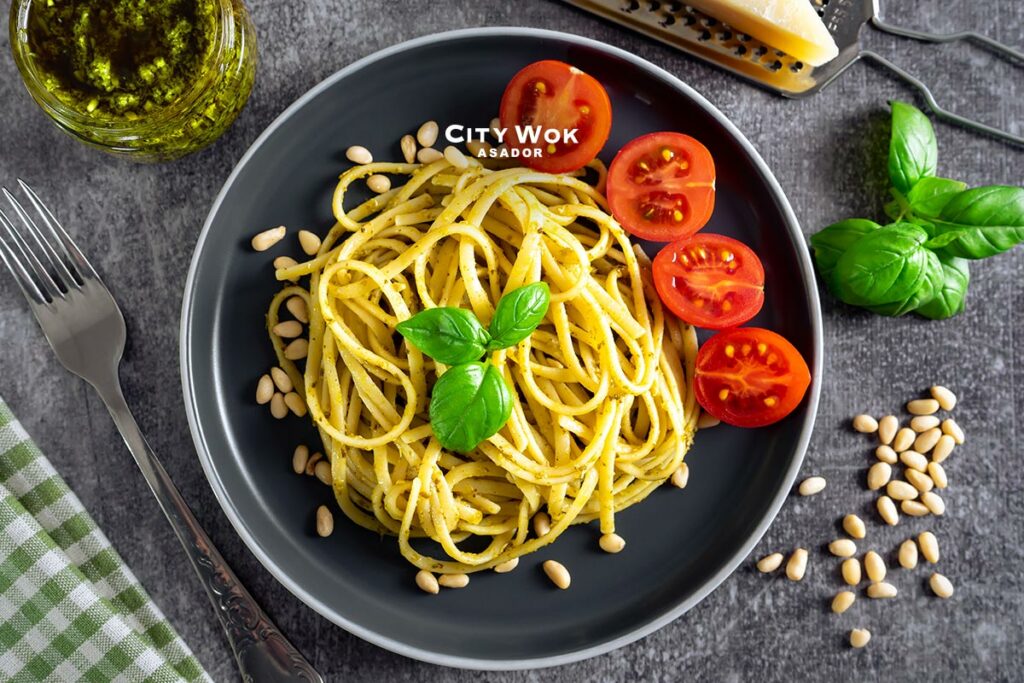Beneficios de comer pasta

La pasta es hoy en día uno de los platos más conocidos alrededor del mundo. Además de por ser el plato por excelencia italiano, por su versatilidad, su facilidad de preparación y su aceptación entre el mayor público posible, es tan conocida por que fue en la época de los romanos, quienes se encargaron de difundir este manjar por toda Europa, así que ya llevan mucho recorrido.
La pasta no es más que granos de trigo molidos mezclados con agua, aunque en algunas ocasiones también se introducen vegetales o huevo, y que se les da la forma deseada. Normalmente estas piezas se deben hervir para que adquieran la consistencia perfecta para poder consumirlos.
La pasta es un carbohidrato
Popularmente la pasta “engorda” pero hay bastantes cosas a tener en cuenta con esta frase.
La pasta es un carbohidrato, pero es un carbohidrato de lenta absorción. Lo que significa que tarda más en digerirse, por lo tanto es más recomendado para nuestra salud.
En la pasta hay que tener en cuenta, el acompañamiento. La pasta en sí ya es un carbohidrato, por lo que los nutricionistas recomiendan acompañarla de vegetales o proteínas para equilibrar la comida.
Tipo de pasta
En el mercado podemos encontrar muchísimos tipos de pasta, pero la clasificación principal sin duda es si es pasta fresca o seca. La pasta fresca es la que encontraremos en el refrigerador del supermercado, y se diferencia por que lleva huevo, y por eso su sabor es más delicado. La pasta seca la encontraremos en cualquier estantería del supermercado, sin necesidad de refrigeración, la diferencia principal de estas dos es el sabor, porque nutricionalmente, los expertos consideran que no hay diferencia.
Además de esta clasificación, la pasta es un nombre muy genérico ya que tenemos muchos tipos de pasta, a continuación te dejamos una breve clasificación para que las sepas diferenciar:
Fusilli
Puede que sean junto con los Farfale, los más conocidos por los niños. Esta tipología de pasta que podríamos asemejar por su forma a la de un macarrón, no son más que espirales. En tu supermercado cercano las puedes encontrar de muchas formas diferentes, además de variedad de colores para los más peques.
Farfale
Esta tipología es muy parecida a los Fusilli, pero en forma de lazo
Penne
Los Penne, son los clásicos macarrones con los lados en forma puntiaguda.
Rigatoni
Los Rigatoni, puede que se confundan con los Penne, pero son más grande y con los lados iguales
Caracolas
Las caracolas como su propio nombre indica, es pasta en forma de caracola.
Nidos
Los nidos son tagliatelle en forma de nido de pajarón, muchas veces los encontramos en el supermercado como pasta al huevo.
Spaghetti
Los espaguetis son tiras largas muy finas de pasta de forma redonda. Son junto con los Penne unos de los más conocidos.
Tagliatelle
Los tagliatelle, al igual que los Spaghetti, son tiras finas de pasta, pero estas en lugar de ser redondas, son planas y un poco más anchas.
Fettuccine
Son una tipología de tagliatelle, pero más anchos, pueden llegar a medir hasta 1 cm de ancho.
Lasagna
La lasagna son planchas de pasta que se utilizan entre capas de relleno del plato.
Raviolis
Una de las pastas rellenas más utilizadas en cocina, son cuadraditos finos de pasta que entre dos cuadrados contienen algún tipo de relleno, esta tipología de pasta se une por los lados para que el relleno quede dentro del ravioli.
Tortellini
También relleno, tiene forma de anillo. Una lámina pequeña de pasta que se rellena de pasta y en la que se unen sus lados en perpendicular.
Cuándo sabemos que la pasta está al dente
Una de las palabras más utilizadas junto con pasta es al dente. Esta expresión italiana es una forma de medir su cocción. La pasta está al dente cuando estando ya apta para el consumo, aún notamos una cierta firmeza.
El tiempo de cocción para tener esta textura, dependerá del tipo de pasta, pero generalmente la pasta fresca bastará con 4 minutos, y la seca necesitaremos 7 o 8 minutos.
En el asador City Wok de Elche encontrarás las mejores recetas de pasta. ¿Ya tienes una preferida?